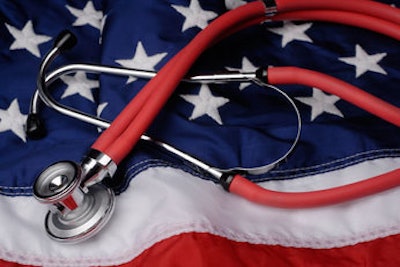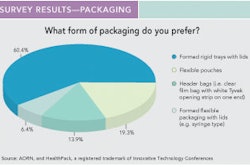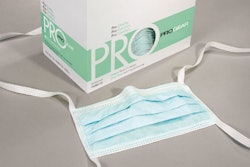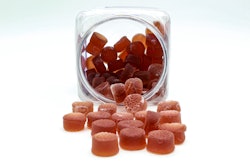
A new political administration plus a new commissioner plus an abundance of challenges add up to a full plate of challenges for the U.S. Food and Drug administration.
“The FDA has been under a tremendous amount of scrutiny for the last few years, and will continue to be,” says Dr. Michael Drues, president of Grafton, MA-based Vascular Sciences, a firm that offers education and training, biosimulation tools, and consulting services to medical device and biotechnology companies. His experience working with both the healthcare industry as well as the FDA provides a balanced perspective. He also offers seminars and teaches at several universities.
Beyond the Barack Obama administration and appointment of Margaret Hamburg, M.D., as commissioner of Food and Drugs, Drues notes that Daniel Schultz recently stepped down as the director of the Center for Devices and Radiological Health (CDRH).
According to the Associated Press, “FDA's device division, which Schultz led for five years, has been under scrutiny since earlier this year when nine scientists wrote to the Obama administration transition team complaining they were pressured to approve medical devices against their professional judgment. Lawmakers are investigating the complaints.”
Debating the 510(k) process
Could changes be in the works for the 510(k)? The 510(k) and the PMA (premarket approval) serve as the two primary regulatory pathways for medical device companies to bring a new device into the U.S. market.
“The PMA is the more stringent of the two pathways,” Drues believes. “Typically, it's required for higher-risk devices.”
For background purposes, Drues points out, “Greater than 95 percent, by volume, of the medical devices that are used today in the United States have never been tested on a human being. How can that be?
“The answer is two-fold,” he says. “First, these products were brought to market under this 510(k) program, which most of the time does not require any human or clinical data. Or, they were grandfathered into the market prior to 1976,” when medical device safety amendments kicked in.
Drues says, “Many in Washington and among the general public are asking if the 510(k) makes sense. Some people are actually advocating that we should throw away the entire 510(k) program. I don't go that far.” To illustrate a point, he notes that the testing necessary to show that an implantable artificial heart is safe and effective differs from the testing to show that a new band-aid is effective.
Packaging implications?
So how might all these changes affect pharmaceutical, biopharmaceutical, and medical device manufacturing and packaging operations?
Drues explains, “Somebody in one of the companies I work with recently speculated that FDA is going to be under a lot more pressure now to follow the existing regulation more diligently than in the past. I don't have a problem with that, except for one important caveat--that the regulation makes sense clinically or technically.
“Many, if not all of those issues, are going to directly or indirectly influence packaging. For example, when you talk about label claims, one of the one important reasons why we do clinical trials is to establish a product's label, and if we are going to be changing the way we do clinical trials in the future or making them more stringent or perhaps increasing the time to market, all of these things are going to impact what goes on a product's label. The more claims or indications they put on the product's label, the more difficult, time-consuming, and expensive the clinical trial is going to be.” And that information often must be printed into a small space on the package.
That leads Drues to the topic of package inserts, where he says that usage directions are important, yet rarely read. “I often say somewhat facetiously, although seriously as well, that after reading the contents of the package insert, who would ever swallow what was in the package?” he asks. “These descriptions are clearly not written for patients, and they're not even written for physicians. I believe they are written primarily by and for attorneys.”
Working with the FDA
Despite the changing FDA landscape, Drues believes a negative perspective about the agency continues to be a roadblock for industry. Drues recommends that packagers partner with the FDA up front, but acknowledges that “it's unfortunate that so many in our industry view the FDA as nothing more than an obstacle or hurdle to get over in order to get their product to the market. The FDA has an awesome responsibility. Yes, it can be bureaucratic and inefficient. But nonetheless, it has a difficult job. So feel free to call the agency and ask them questions.”
Specifically, Drues advises packagers in the medical device community to visit www.fda.gov and search for the Division of Small Manufacturers and Consumer Assistance (DSMICA). The site provides contact names for assistance on a variety of issues, including 510(k) submissions, inspections, labeling, regulations, etc. For more information, visit http://www.fda.gov/MedicalDevices/DeviceRegulationandGuidance/ucm142656.htm. “Ask them questions--we are paying for that as part of our tax dollars and I highly encourage people to take advantage of it.”
“The FDA has been under a tremendous amount of scrutiny for the last few years, and will continue to be,” says Dr. Michael Drues, president of Grafton, MA-based Vascular Sciences, a firm that offers education and training, biosimulation tools, and consulting services to medical device and biotechnology companies. His experience working with both the healthcare industry as well as the FDA provides a balanced perspective. He also offers seminars and teaches at several universities.
Beyond the Barack Obama administration and appointment of Margaret Hamburg, M.D., as commissioner of Food and Drugs, Drues notes that Daniel Schultz recently stepped down as the director of the Center for Devices and Radiological Health (CDRH).
According to the Associated Press, “FDA's device division, which Schultz led for five years, has been under scrutiny since earlier this year when nine scientists wrote to the Obama administration transition team complaining they were pressured to approve medical devices against their professional judgment. Lawmakers are investigating the complaints.”
Debating the 510(k) process
Could changes be in the works for the 510(k)? The 510(k) and the PMA (premarket approval) serve as the two primary regulatory pathways for medical device companies to bring a new device into the U.S. market.
“The PMA is the more stringent of the two pathways,” Drues believes. “Typically, it's required for higher-risk devices.”
For background purposes, Drues points out, “Greater than 95 percent, by volume, of the medical devices that are used today in the United States have never been tested on a human being. How can that be?
“The answer is two-fold,” he says. “First, these products were brought to market under this 510(k) program, which most of the time does not require any human or clinical data. Or, they were grandfathered into the market prior to 1976,” when medical device safety amendments kicked in.
Drues says, “Many in Washington and among the general public are asking if the 510(k) makes sense. Some people are actually advocating that we should throw away the entire 510(k) program. I don't go that far.” To illustrate a point, he notes that the testing necessary to show that an implantable artificial heart is safe and effective differs from the testing to show that a new band-aid is effective.
Packaging implications?
So how might all these changes affect pharmaceutical, biopharmaceutical, and medical device manufacturing and packaging operations?
Drues explains, “Somebody in one of the companies I work with recently speculated that FDA is going to be under a lot more pressure now to follow the existing regulation more diligently than in the past. I don't have a problem with that, except for one important caveat--that the regulation makes sense clinically or technically.
“Many, if not all of those issues, are going to directly or indirectly influence packaging. For example, when you talk about label claims, one of the one important reasons why we do clinical trials is to establish a product's label, and if we are going to be changing the way we do clinical trials in the future or making them more stringent or perhaps increasing the time to market, all of these things are going to impact what goes on a product's label. The more claims or indications they put on the product's label, the more difficult, time-consuming, and expensive the clinical trial is going to be.” And that information often must be printed into a small space on the package.
That leads Drues to the topic of package inserts, where he says that usage directions are important, yet rarely read. “I often say somewhat facetiously, although seriously as well, that after reading the contents of the package insert, who would ever swallow what was in the package?” he asks. “These descriptions are clearly not written for patients, and they're not even written for physicians. I believe they are written primarily by and for attorneys.”
Working with the FDA
Despite the changing FDA landscape, Drues believes a negative perspective about the agency continues to be a roadblock for industry. Drues recommends that packagers partner with the FDA up front, but acknowledges that “it's unfortunate that so many in our industry view the FDA as nothing more than an obstacle or hurdle to get over in order to get their product to the market. The FDA has an awesome responsibility. Yes, it can be bureaucratic and inefficient. But nonetheless, it has a difficult job. So feel free to call the agency and ask them questions.”
Specifically, Drues advises packagers in the medical device community to visit www.fda.gov and search for the Division of Small Manufacturers and Consumer Assistance (DSMICA). The site provides contact names for assistance on a variety of issues, including 510(k) submissions, inspections, labeling, regulations, etc. For more information, visit http://www.fda.gov/MedicalDevices/DeviceRegulationandGuidance/ucm142656.htm. “Ask them questions--we are paying for that as part of our tax dollars and I highly encourage people to take advantage of it.”



















